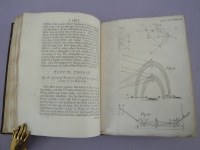

We claim the de Broglie wavelength is merely a mathematical derivative of the Compton wavelength, the true matter wavelength.Title Opticks : or, A Treatise of the Reflexions, Refractions, Inflexions and Colours of Light Author Sir Isaac Newton (1642–1726/7) Publication London: Printed for Sam. Second, standard physics have built their quantum mechanics around the de Broglie wavelength, rather than the Compton wavelength. Thus, we have neglected to see an important aspect of mass namely, the indivisible particle that Newton also held in high regard. First, it has been common practice to consider Newton’s gravitational constant as almost holy and untouchable. We claim that two mistakes have been made in physics, which have held back progress towards a unified quantum gravity theory. This leads to a quantum gravity theory that is unified with quantum mechanics and in which there is no need for G and not even a need for the Planck constant.

It is when we first combine Newton’s assumptionn, that matter and light ultimately consist of hard indivisible particles, with new insight in atomism that we can truly begin to understand gravity at a deeper level.

However, to understand gravity at a deeper level, still without G, one needs to trust Newton’s formula. This is, to some degree, well known, at least for those that have studied a significant amount of the older literature on gravity. In this paper, we will show how a series of major gravity phenomena can be calculated and predicted without the gravitational constant. Newton’s original gravity formula was and not.

Newton Gravity, Newton’s Gravitational Constant, Schwarzschild Radius, Quantum Gravity, Planck LengthĪBSTRACT: Newton did not invent or use the so-called Newton’s gravitational constant G. Newton Did Not Invent or Use the So-Called Newton’s Gravitational Constant G, It Has Mainly Caused Confusion


 0 kommentar(er)
0 kommentar(er)
